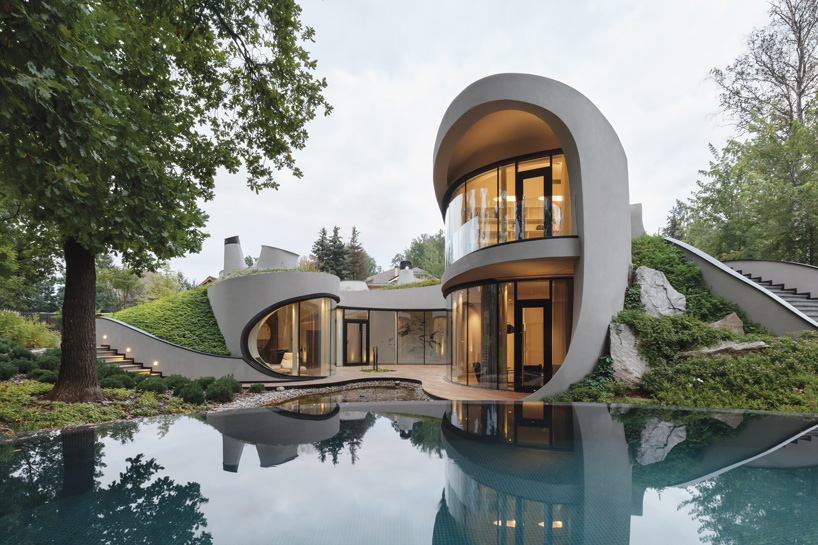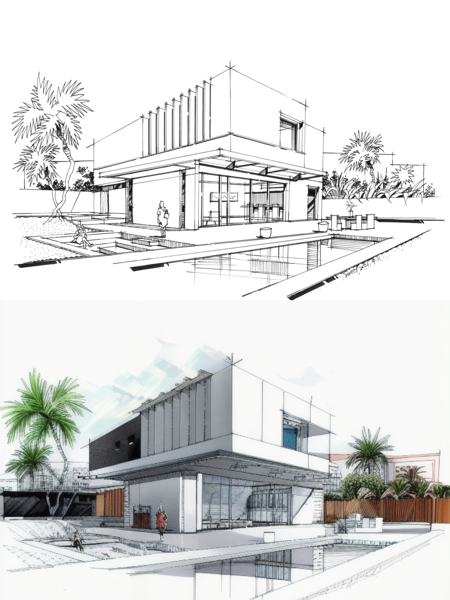Transforming Rooms: The Vision of CDA Architects for Modern Living
Transforming Rooms: The Vision of CDA Architects for Modern Living
Blog Article
The Impact of Technical Improvements on the Design Practices of Contemporary Architects
The quick evolution of technological tools has actually dramatically improved the design landscape for contemporary architects, promoting unmatched degrees of technology and sustainability. Exploring these dynamics reveals a nuanced interplay between technology and conventional style methods, motivating a more detailed exam of what the future holds for building techniques.
Advancement of Architectural Devices
Just how have building devices changed the style and building and construction procedures over the centuries? The development of building tools has considerably impacted the efficiency, accuracy, and creative thinking of layout and building and construction. In old times, designers depend on simple instruments such as plumb bobs, measuring rods, and standard geometry to produce structures. These tools laid the structure for very early architectural practice, permitting the building and construction of legendary frameworks, albeit with restrictions in precision and intricacy.
With the arrival of the Renaissance, the intro of the compass and the protractor marked a crucial shift. These devices allowed architects to attain greater precision in their styles, facilitating the introduction of more detailed and in proportion structures (cda architects). The Industrial Transformation better reinvented architectural experiment the intro of mechanized devices and materials, permitting larger and a lot more ambitious jobs
In the 20th century, the growth of computer-aided design (CAD) software program transformed the landscape once more, offering architects with extraordinary capacities in modeling and visualization. Today, progressed devices such as Building Information Modeling (BIM) and parametric style software continue to push the boundaries of building advancement, enabling an extra integrated technique to style and construction procedures.

Boosted Collaboration in Layout
As modern technology remains to advance, improved partnership in design has actually ended up being a keystone of modern-day architectural practice. The assimilation of electronic tools such as Building Information Modeling (BIM), cloud-based systems, and advanced visualization software program has changed the method architects, designers, and stakeholders connect throughout the style procedure. These devices facilitate real-time communication, allowing teams to share concepts, adjustments, and responses instantaneously, despite geographical location.
In addition, online truth (VR) and enhanced reality (AR) have additional enriched collaborative initiatives by allowing immersive experiences that permit customers and staff member to picture jobs in a much more appealing manner. This level of interaction not only enhances understanding however also promotes a feeling of ownership among stakeholders, bring about more enlightened decision-making.
In addition, interdisciplinary partnership has been structured with these technological innovations, enabling engineers to work much more very closely with various other experts, such as metropolitan organizers and ecological consultants. The outcome is a more cohesive strategy to design that considers different viewpoints and expertise. Inevitably, enhanced partnership in design is not just a fad; it is vital for producing cutting-edge, practical, and visually pleasing design in a progressively intricate globe.
Sustainability Via Modern Technology
Sustainability in design has actually significantly ended up being linked with technical technology, driving the sector towards eco responsible methods - cda architects. Contemporary engineers are leveraging sophisticated innovations to reduce ecological impact while enhancing the efficiency of structures. One prominent example is making use of Structure Information Modeling (BIM), which permits specific preparation and resource allocation, decreasing waste throughout building and advertising energy effectiveness throughout a structure's lifecycle
Additionally, clever materials and energy-efficient systems are being incorporated right into layouts to optimize resource use. Technologies such as solar cells and eco-friendly roofing systems harness renewable resource sources, adding to minimized carbon impacts. Additionally, the application of expert system in style procedures enables engineers to simulate and assess power intake, assisting choices toward even more sustainable results.
The combination of lasting innovations not just lines up with international ecological objectives but also satisfies a raising demand from customers for green remedies. As architects welcome these technologies, the focus changes towards creating areas that are not just visually pleasing yet likewise functionally lasting, consequently redefining the requirements of modern style. In this means, innovation acts as a stimulant for sustainability, making it possible for architects to design buildings that respect and enhance the all-natural setting.
Challenges in Implementation
While technical advancements in style hold fantastic promise for enhancing sustainability, their application often experiences substantial difficulties. One primary obstacle is the high you can look here understanding contour connected with brand-new technologies. Designers and building specialists might call for extensive training to efficiently make use of sophisticated software application and Extra resources devices, which can postpone task timelines and increase prices.
Additionally, the combination of arising modern technologies, such as Structure Information Modeling (BIM) and sustainable products, typically demands cooperation across multidisciplinary groups. This collaboration can be prevented by distinctions in know-how, process, and communication styles, causing prospective problems and inefficiencies.
Financial constraints even more make complex the fostering of innovative technologies. Several building firms, specifically smaller sized ones, may lack the sources to buy advanced tools, restricting their capability to complete with larger companies that can manage such investments.
Furthermore, regulative structures and building codes might not equal technical innovations, producing ambiguity and potential compliance issues. This difficulty can dissuade designers from fully embracing brand-new modern technologies, as the threat of non-compliance may exceed the benefits. For that reason, dealing with these execution difficulties is crucial for the successful combination of technical improvements in modern architectural practices.
Future Patterns in Architecture
The challenges related to the execution of new innovations in design have triggered a reevaluation of future trends within the industry. As designers browse concerns such as sustainability, urbanization, and social equity, they are increasingly adopting cutting-edge innovations to boost design performance and ecological efficiency.
One prominent trend is the assimilation of man-made intelligence (AI) in the layout procedure. AI devices can assess huge datasets to educate design decisions, improving both creative thinking and performance. In A Similar Way, Structure Info Modeling (BIM) proceeds to evolve, enabling real-time partnership amongst stakeholders and promoting streamlined job administration.
Sustainable style practices are also getting momentum, with designers focusing on flexible reuse and regenerative style concepts that reduce source intake and waste. The unification of clever products and sustainable power look at this now resources will better improve the resilience of structures in the face of climate change.
In addition, the rise of parametric design permits more tailored and context-sensitive architectural solutions. By taking advantage of these developments, engineers are positioned to create built atmospheres that not only attend to the prompt requirements of culture yet additionally expect future difficulties, thereby redefining the duty of design in an ever-changing globe.
Final Thought

Report this page